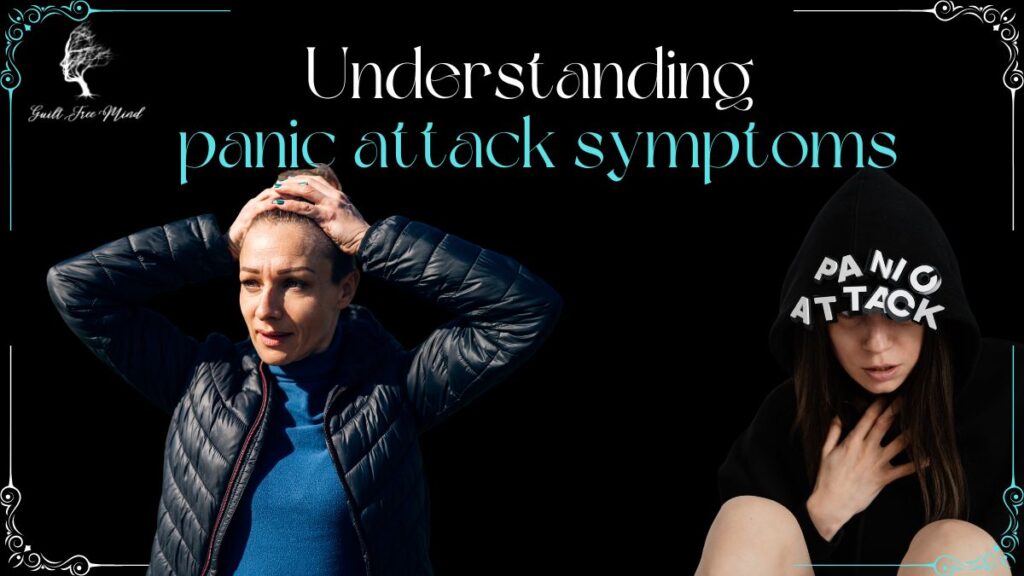Have you ever felt like you cannot breathe? The walls are closing in on you? Your mind struggles to find a way to breathe but you come up empty. The heart feels like it’s pumping on the outside. Your ears are ringing. You feel sweaty and dizzy all at the same time. If you have ever faced symptoms like these, you were probably having a panic attack as these are the panic attack symptoms. If you are suddenly plagued by a panic attack, it can be very scary, for both you and your loved ones.
Panic attack occurs when you suddenly start to feel intense fear or discomfort in your body. The physical symptoms of panic attacks are rapid heartbeat, shortness of breath, dizziness, and feeling hot and cold at the same time. The biggest problem with panic attacks is that they can rear their ugly head anytime and leave you completely flustered, helpless, and out of control.
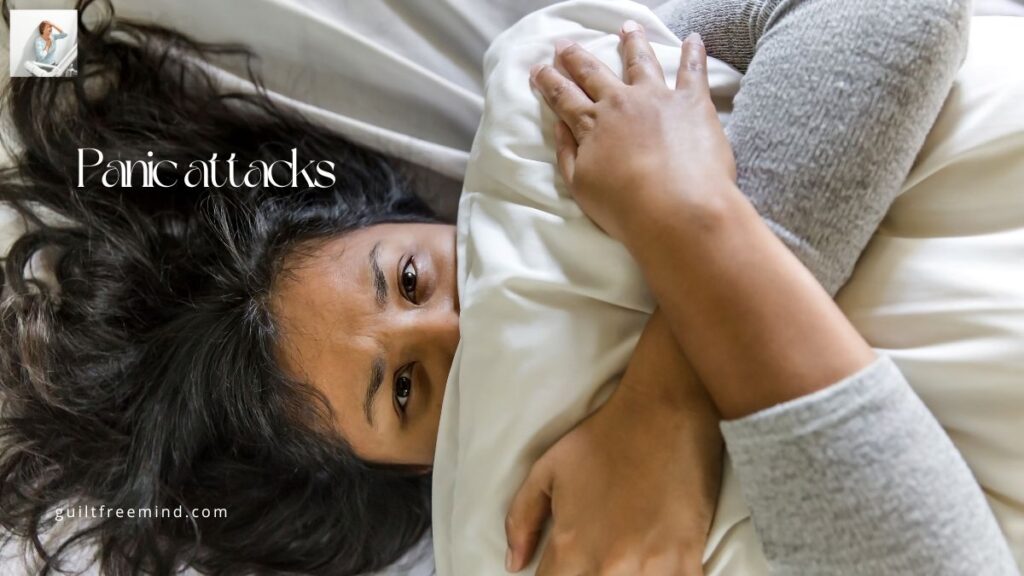
Table of Contents
Panic attack symptoms can be managed
With the latest advances in psychology, more and more people can manage their panic attack symptoms by themselves. This gives them a sense of control and they don’t have to feel helpless. In this blog post, I will discuss the triggers that are most often responsible for initiating the panic attack and how you can easily bring the panic attack symptoms under control. Even if you have never experienced panic attacks before, or are looking to help out someone who needs help, make sure you read the blog post all the way to the end so that you grasp all the details perfectly.
If you want to know more about panic attacks, anxiety, depression, and other mental health issues, please subscribe to the Guilt Free Mind blog. The subscription option is present in the sidebar. Your subscription will allow me to notify you the moment the next blog post goes live. If you like watching videos, subscribe to the YouTube channel of Guilt Free Mind. Don’t forget to ring the notification bell so that YouTube can notify you about every new release from the channel.
Understanding panic attacks:
Before I discuss the symptoms of panic attacks, you need to understand what a panic attack is. The primary problem with panic attacks is that it is a very frightening experience. You suddenly start to feel that you are losing all control and nothing is in your hands. Some have even reported that they felt as if they were having a heart attack or dying.

In most cases, people only go through 1-2 cases of panic attacks in their lifetime. This occurs when the person unexpectedly faces a very difficult and unexpected situation like the death of a loved one, a break-up out of the blue etc. Once the problem goes away or once the person comes to terms with it, the panic attack doesn’t happen anymore. However, if you are someone who is repeatedly experiencing panic attacks, and spends a long duration of time worrying about when the next attack might occur, there is a chance that you are suffering from a case of panic disorder.
On their own, panic disorders do not pose any kind of threat to your life. However, living in constant fear of when the next panic attack will occur can seriously reduce the quality of your life. You will constantly be worried about the triggers around you. Many people confine themselves to their homes out of fear. Hence panic disorder does have a negative effect on one’s overall existence. Luckily, there are several treatment modalities that can be quite effective in helping you manage panic attack symptoms.
Understanding the difference between anxiety disorders and panic disorders
The primary difference between anxiety and panic attack is that an anxiety attack tends to build up over time. The stressors slowly turn into triggers. On the other hand, in case of panic attack, there is a sudden onset that catches the person completely off guard.
Anxiety and panic attacks share some similarities. For example, a racing heart rate is common in the case of both problems. In the case of anxiety attack, the accompanying symptoms are:-
- pacing
- the feeling of knots in the stomach
- feeling like you want to puke out the contents of your stomach etc.
On the other hand, panic attacks occur at any time irrespective of the place where you are. The unexpectedness in the case of a panic attack causes the person to lose control over their own body.
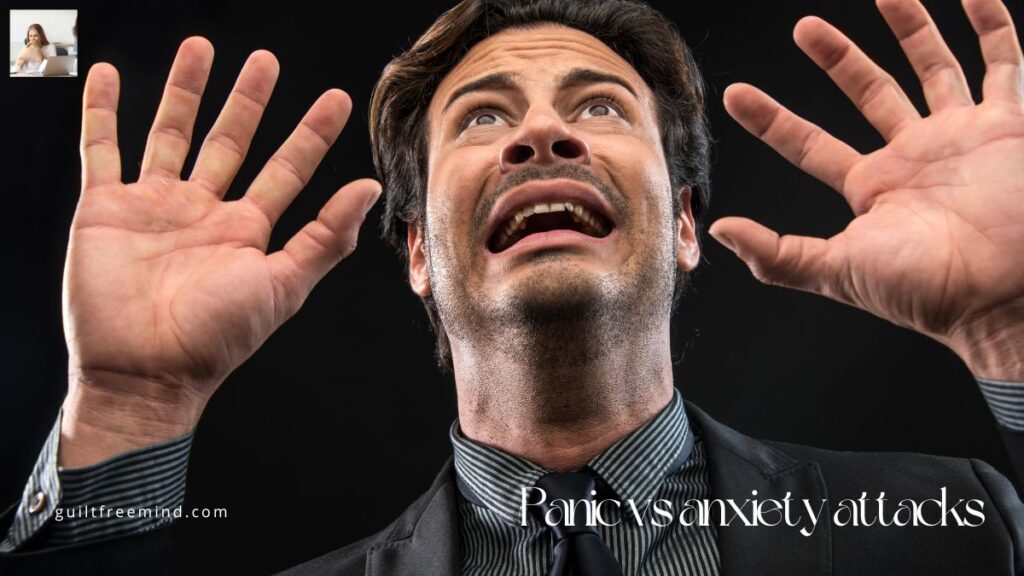
In the case of anxiety, the symptoms have a lower life span compared to panic attacks. However, the symptoms don’t last very long. This is one of the major differences between the two conditions. When a panic attack takes place, the symptoms are intense and last for a much longer period than they would in case of an anxiety attack.
Panic attacks vs anxiety attacks
Most of the time, people get confused between panic and anxiety attacks because the symptoms are somewhat similar. Check out his table to know the clear differences between panic attack symptoms and anxiety attacks.
Understanding panic disorder
Panic disorder is a type of anxiety disorder. However, what distinguishes this from other disorders is that this one involves the occurrence of multiple panic attacks at unexpected times. During the panic disorder, there is no warning before occurrence. It also does not occur due to existing physical or mental health conditions. Due to the absence of a clear trigger, panic disorder is very hard to bring under control. There is a common confusion that if you have a panic attack, you are developing panic disorder. However, this is not true. It is not necessary that if someone experiences a panic attack, they will also develop a panic disorder.
Panic attack occurrence
Panic attacks are a common problem in today’s super stressful and busy world. Every year, in the United States, on average, 1% of people experience symptoms of a panic attack. Around 2-3% of the population in the US faces panic disorder. Those who were assigned female have a higher chance of developing the panic disorder than those who were designated as male after birth.
What causes panic disorder?
So far, experts have not been able to find the exact cause behind the occurrence of panic disorders or panic attacks. Our ability to handle and respond to anxiety and fear depends on our nervous system and brain. Studies have found that those people who have dysfunctional amygdala show a higher chance of developing a panic disorder. This is because the amygdala is the section of the brain that is responsible for processing fear and other forms of innate emotions. Studies have shown that chemical imbalances in the brain like GABA, serotonin or cortisol may also have a hand in causing panic attacks.
What boosts the chances of a person suffering from panic disorder?
A few factors can increase the chances of a person displaying panic attack symptoms. Let’s have a look at some of those:
Family history of anxiety issues
In most cases, panic and anxiety disorders are buried in the family history of an individual. If one of your close or first-degree relatives has panic disorders or anxiety issues, the chance of you developing a panic disorder increases by 40%.
Pre-existing mental health issues
Those who already have mental health issues like depression and anxiety disorders have a higher chance of experiencing panic attacks. A panic attack is also considered to be one of the common symptoms in case of those suffering from PTSD.
Adverse childhood experiences (aces)
These are adverse experiences that a person may experience during their childhood years. Normally the age of 1-17 is considered for assessment of this factor. If during this age bracket the child has experienced traumatic events like sexual abuse, physical abuse, etc, the chances of the child developing panic attacks and panic disorders later in life increase.
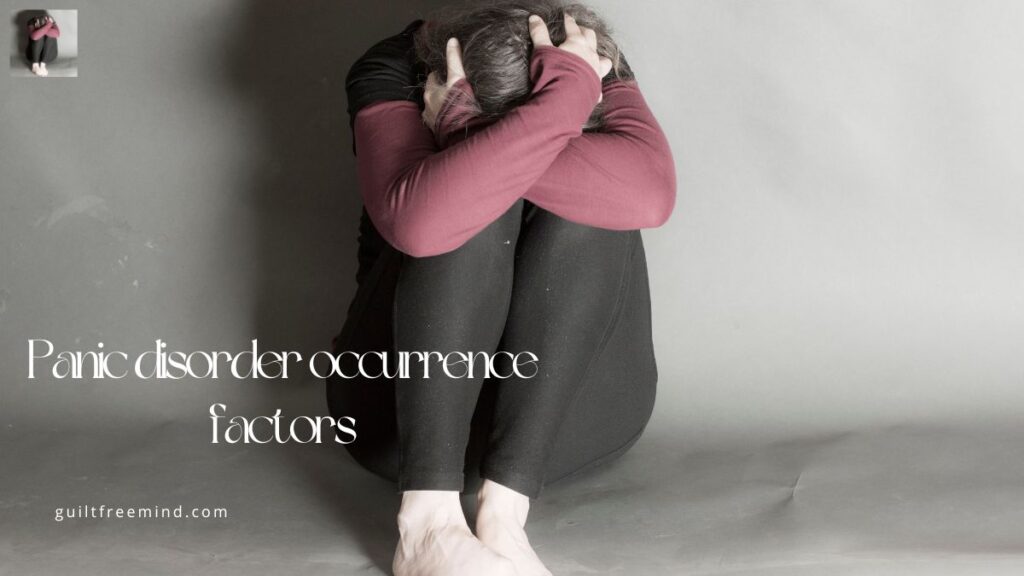
Occurrence of a major Life stressor
If you receive tragic news suddenly it can bring about the occurrence of a panic attack. Most often such news is extremely difficult to process by the mind. Eg:- the sudden death of a loved one, sudden layoff from your job, etc.
Sudden major life change
For a sudden situation to cause a panic attack, it has to be something that the mind finds impossible to process suddenly. This could be a situation like getting the news that you will be a parent when you are not ready for the responsibility of a baby at all. An alternate scenario could be your husband asking for divorce when as per you everything is okay in your relationship.,
Sudden occurrence of a traumatic event
If a traumatic event suddenly occurs, it will be too much for your brain to process eg: if you were in a serious accident or if you were a victim of sexual assault. Sudden occurrences of traumatic events can also affect you indirectly. For example: hearing the account of a person who was a victim of sexual assault, how they suffered, their trauma, difficulties, and hardships.
Mental health conditions that can bring about panic attack symptoms:
In most cases, panic attacks occur as a part of the panic disorder issue. However, they can happen in case you are suffering from other mental health issues as well like:-
- Mood disorders
- Anxiety disorders
- Psychotic disorders
- Substance abuse disorder
- Medical conditions
- Phobias
- Traumas,
- Stress-related disorders
Having a panic attack once in your lifetime is not dangerous or detrimental. However, if you keep getting panic attacks regularly, it will greatly contribute to reducing your quality of life. It may also lead to panic disorders,
Triggers for panic attacks
So far no specific trigger has been isolated for panic attacks. Depending on one’s history they may experience phobias related to panic attack symptoms trigger. This in turn leads to the person having a panic attack. Eg:- if a person suffers from trypanophobia (fear of needles), they may get a panic attack if they have to go for a medical test.in some cases, even the fear of having a panic attack can instigate a panic attack in a person.

Panic attack symptoms
Panic attacks don’t occur with warnings. They happen suddenly and can be absolutely terrifying. Those who have faced panic attacks describe it as dying and going crazy; all at the same time. The terror and fear that the person experiences are not at all proportional to the real situation and may not relate at all to whatever is going on around them.
Some have reported that they felt as if their heart was failing when they experienced a panic attack. Some panic attack symptoms like heart palpitations, sweaty palms etc.may make you feel as if you are dying. The biggest problem with panic attacks is that they start and end abruptly. However, this leaves the person completely exhausted.
In case you ever notice four or more of the following panic attack symptoms, you should try to calm down as soon as possible: –
- Sudden feelings of a high level of anxiety
- Racing heartbeat
- Feeling dizzy, faint and weak
- Uncontrollable shaking
- Numbness or tingling in the extremities of the body.
- Sweaty and chilling at the same time
- Nausea
- Sense of impending doom
- Feeling like you are about to die
- Discomfort or chest pain.
- A choking feeling
- A sense that you are living in an unreal world.
- Feeling that you are going crazy and losing all control.
- Losing control
- A feeling that you are being smothered
- Shortness of breath.
Duration of panic attacks:
Generally, panic attacks do not last for a period longer than 10 minutes. However, a few of the symptoms may go on longer. Even if you have a single episode of a panic attack, it is not life-threatening or uncommon. It can be an extremely uncomfortable experience.
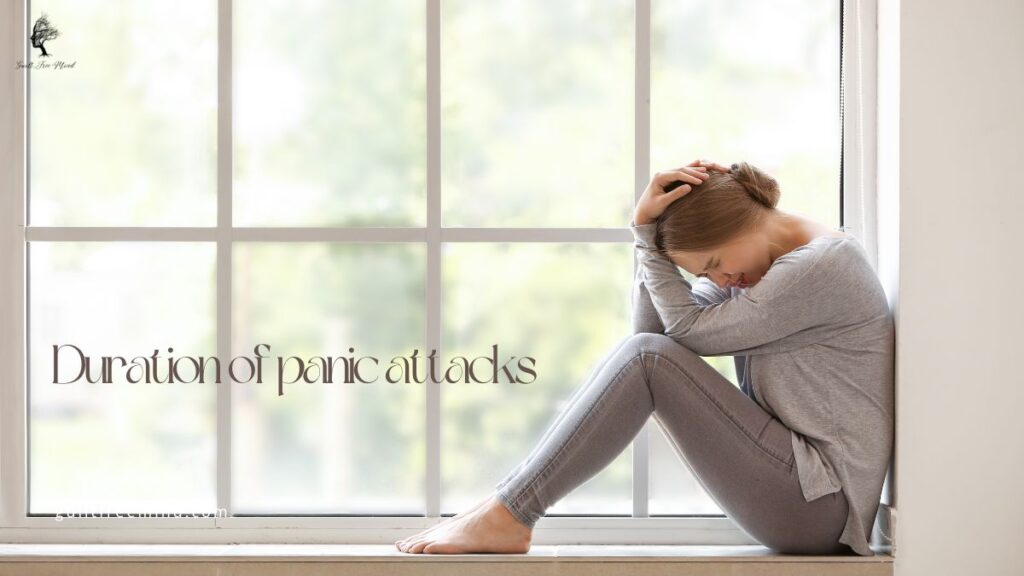
As I mentioned before, a panic attack can be a sign of an underlying medical condition. If a person has been through one panic attack, there is a chance that they will be prone to having more panic attacks in the future. Therefore, do not take the problem lightly. Go to a mental health practitioner as soon as possible so you know what’s causing this and implement strategies that will help you heal.
Common complications observed in case of those who regularly suffer panic attacks:
If the underlying condition causing the problem is left untreated, the panic attacks can turn into panic disorders. In other words, panic attacks and panic disorders have the potential to ruin your life and make it very difficult to get back to normalcy. Those who have suffered through a few episodes of panic attacks are constantly afraid of going through another episode. Thus, panic attacks can ruin your life.
Complications associated with panic attacks
- Phobia development like fear of leaving your house, fear of driving, fear of meeting new people.
- Constantly avoiding talking to people and social situations
- Problems at the workplace and school
- Development of medical conditions and a constant fear of falling sick.
- Development of depression and other anxiety disorders.
- Increased chances of suicidal thoughts and suicide attempts.
- Financial issues
- Substance abuse problems.
In certain cases, panic disorder or repeated panic attacks causes the person to develop agoraphobia. Agoraphobia is a condition that causes a person to feel cautious in social settings. For this reason, the person may start to avoid social situations entirely in some cases Such people depend on others to accompany them when they leave the house.
Diagnosis of panic attacks
When you visit a mental health care provider about your panic attacks, they will first ask you about your symptoms and medical history. They may send you to a general practitioner to rule out any medical condition that’s causing the problem. Eg: – heart issues, respiratory or lung problems, thyroid issues etc.

In case there is no underlying cause, your provider will make the diagnosis depending on the symptoms and risk factors present. The diagnosis is generally done on the basis of the criteria present in the Diagnostic and Statistical Manual of Mental disorders (DSM-5). You may be diagnosed with panic disorder if you are having repeated episodes of unexplained panic attacks for over a month along with one of the following conditions:
- Persistently worrying about the occurrence of more panic attacks
- Changing your behavior or trying to work in a manner so you can escape all possible triggers that may induce panic attacks.
- Avoiding all situations and scenarios that can cause panic attacks.
How to tackle panic attack symptoms?
Unfortunately, there is no way to immediately stop a panic attack, once it has started. However, there are certain steps that you can start working on right now. These will help you manage the panic attack symptoms when they show up.
Practice deep breathing
One of the most common symptoms that one faces during a panic attack is hyperventilation. This symptom is the reason why people think that they might die. Start practicing deep breathing from today, so that next time when you have a panic attack, you can reduce the intensity of hyperventilation.
To practice deep breathing, focus on your breath as you take the air in and release it. Count when you breathe in and release the air. If you counted to 5 when you were breathing in, slow down your breathing and try counting to 8. When you breathe in, it should be through your nose. When you breathe out, do it from your mouth. Use the count as a way to understand how much you have been able to slow your breathing rate.
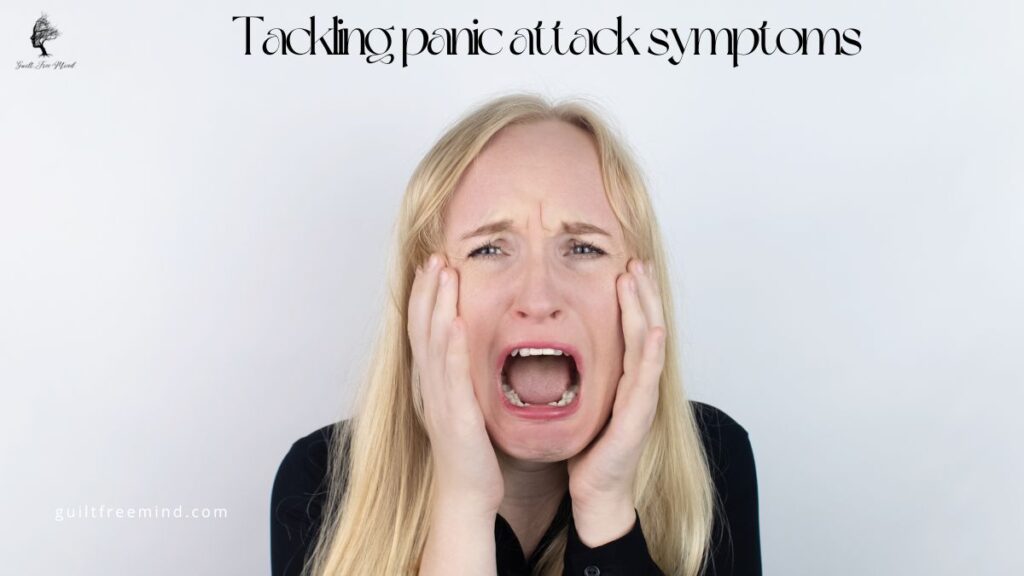
Acknowledge that you are having a panic attack
Remind yourself that it’s only a panic attack. It’s not a dangerous life-threatening situation. It will pass in a while and things will get back to normal. Reminding yourself of reality can help you combat the situation in an easier manner. Always remind yourself that this situation is temporary and it will pass.
Relax the muscles
Muscles tend to tense up when a person is having a panic attack. Therefore focus on one muscle at a time and try to loosen it up when a panic attack occurs.
Practice mindfulness
In most cases, when a person is having a panic attack, they feel detached from their own body. If you start practicing mindfulness, it will help you deal with panic attack better. Focus only on centering your thoughts on the present moment. Try not to think of the past or future.
Bonus tip
I would like to give you a bonus tip here. Those of you who have been following this blog, my YouTube channel, or have received consultation about your mental health issues would know what I always say. You cannot heal from your problems in one day. The techniques to tackle panic attack symptoms mentioned alone won’t work if you use them only when already
facing a panic attack. They will work when you have practiced them beforehand. Thus, start practicing the above-mentioned techniques today on so that you can be prepared to deal with panic attacks in the future.
How to prevent panic attacks?
There are a few methods that you can employ so you can reduce the chances of a panic attack occurring in future.
- Practice breathing exercises daily
- Practice general exercises like aerobics or yoga so you can release physical stress.
- Do activities that boost your mood and confidence.
- Eat proper and healthy meals to keep your blood sugar levels stable.
- Avoid caffeine, smoking, alcohol, and drugs.
- Join a panic attack support group.
- Try Cognitive Behavioral Therapy to manage the underlying stress or mental health condition.
- Seek Treatment
- Be regular with your appointments.
- Focus on complementary therapies like aromatherapy, massage etc. that can help you relax.
When should you seek help for panic attack symptoms?
One panic attack episode doesn’t warrant a need to visit your mental healthcare provider. However, if you have been facing repeated episodes of panic attacks, or if you are facing the following signs, going to a mental health practitioner is in your best interests:
- Long-lasting and chronic anxiety that is interfacing with your everyday life.
- Facing difficulty in focusing on simple tasks.
- Extreme irritation and frustration
- Constantly afraid to leave home
- Panic attacks last longer than 15 minutes every time.
- Sleep issues.

Treatment for panic attack symptoms
In most cases, for the treatment of panic disorder and panic attacks, a mixture of psychotherapy and medicines is used. The duration of treatment depends on horn severe your condition is and how well you are responding to the therapeutic measures.
Psychotherapy
For psychotherapy, CBT or cognitive Behavioral therapy is used. CBT focuses on altering the person’s way of thinking and processing Emotions. Once you learn how to deal with the emotions when you are facing a panic attack, the attack will become easier to control. Once you learn t react in a different manner, the frequency of the attack reduces.
Exposure therapy
Exposure therapy is a subset of CBT used to confront the beliefs and fears that are generally associated with panic attacks and panic disorders. This will get you ready to face the next time the triggers appear. In some cases, exposure therapy is used alongside relaxation exercises to help you manage the symptoms effectively.
Medication
Healthcare providers like psychiatrists may prescribe medicines for treating panic disorders. The psychiatrist may prescribe
- Antidepressants like selective serotonin reuptake inhibitors (SSRIs) and serotonin-norepinephrine reuptake inhibitors (SNRIs)
- Anti-anxiety medication like benzodiazepine
- Beta-blockers
SSRIs and SNRIs are most commonly used for cases of depression. However, they can also be used to treat the symptoms of panic disorder. The medications may need a few weeks to start working. Some side effects of these medications are nausea, insomnia, headaches etc. The side effects of these meds are generally not severe. Usually, the meds are started on low doses and then the dose is increased depending on the need of the patient. In case you experience any side effects, talk to your psychiatrist as soon as possible.

Beta-blockers are used to relieve some of the physical panic attack symptoms. Like high heart rail, tremors, sweating. Under normal conditions, beta-blockers are not prescribed to help with panic attacks. However, in some cases, they may be used to lower the chances of the occurrence of panic attacks.
Benzodiazepines are anti-anxiety medications. They are extremely effective in rapidly reducing the famous attack symptoms.in certain cases, people may develop a dependency on these medications. They may need higher doses. In other cases, people have become dependent on them. Thus, healthcare providers may prescribe them for short durations.
Conclusion
Panic attack symptoms make for a debilitating condition that starts suddenly without any warnings. It is overwhelming and frightening not only for the person suffering but for their loved ones as well. There is no specific medication for managing panic attacks. However, if you address the underlying mental health condition, it can help you reduce the frequency. You can also practice deep breathing, relaxation techniques etc. These can be an enormous help in managing panic attack symptoms. Time patience and a little effort can help gain control and get your life back on track.
If you want to know more about anxiety, depression and other mental health issues, please subscribe to Guilt Free Mind. The subscription option is present in the sidebar. If you like watching videos, subscribe to the YouTube channel of Guilt Free Mind. Do not forget to ring the notification bell.
If you have any queries about this blog post or any other on Guilt Free Mind, feel free to leave them in the comment section. Alternatively, you can reach me live on Twitch. I do coworking streams on Twitch. You can also reach me on any of my social media channels.
I will be happy to help
